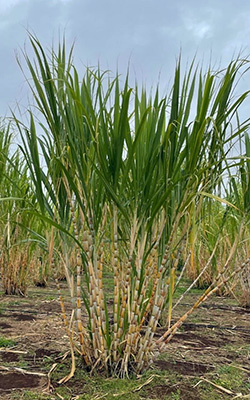Why Walking Cane Sugar Handling Chemicals Are Essential for Modern Sugar Refining
The duty of walking cane sugar handling chemicals in modern sugar refining can not be overemphasized, as they are indispensable to enhancing both the efficiency of extraction and the overall quality of the end product. Representatives such as phosphoric acid and specific flocculants are employed to eliminate contaminations, causing sugar that not just satisfies customer assumptions yet additionally abides by sector standards. However, the implications of these chemicals expand past quality, discussing market characteristics and environmental considerations. This increases essential concerns regarding the sustainability of such methods and their influence on the future of sugar manufacturing.
Role of Handling Chemicals
The effectiveness of walking stick sugar handling hinges substantially on the calculated application of processing chemicals. These chemicals play a crucial function in enhancing the performance and high quality of sugar extraction and refining. From the preliminary phases of juice removal to the final filtration steps, handling chemicals help with numerous essential operations.
In the removal phase, chemicals such as phosphoric acid and calcium hydroxide are used to optimize the information process, aiding to eliminate contaminations and suspended solids from the walking cane juice. This not just boosts the yield however likewise makes certain the clarity of the end product. Additionally, representatives like flocculants aid in the quick settling of impurities, consequently simplifying the overall procedure.
As the handling advances, chemicals are used in decolorization and formation phases. Activated carbon and ion exchange resins serve to get rid of color and smell, ensuring that the refined sugar satisfies consumer quality requirements. Eventually, the duty of handling chemicals extends beyond operational efficiency; they significantly influence the sensory qualities of the last item, adding to market competition. Thus, the careful selection and application of these chemicals are crucial for attaining optimal outcomes in walking cane sugar processing.
Secret Types of Chemicals
Walking stick sugar handling counts on a variety of crucial chemicals that facilitate each stage of production. These chemicals play vital functions in clearing up, whitening, and cleansing the sugar removed from walking cane.
One primary classification of chemicals consists of flocculants, such as polyacrylamide, which help in the explanation process by advertising the aggregation and settling of contaminations. Furthermore, calcium hydroxide is typically employed to counteract level of acidity and assist in the elimination of non-sugar components.
Bleaching representatives, such as turned on carbon and sulfur dioxide, are made use of to decolorize the syrup, causing a more clear end product. These chemicals help eliminate color compounds that may influence the sugar's look and marketability.
Furthermore, phosphoric acid serves as a pH regulator throughout the processing phases, ensuring optimum problems for the enzymatic tasks included in sugar extraction and purification.
Other vital agents include edta (ethylenediaminetetraacetic acid), which chelates metal ions that could militarize unwanted reactions, and salt hydroxide, which assists in pH control throughout the refining process. Collectively, these chemicals enhance performance and make certain a premium walking cane sugar item.
Benefits for Sugar High Quality
Often ignored, the usage of specific processing chemicals significantly enhances the general top quality of walking stick sugar. These chemicals play a pivotal function in refining procedures, guaranteeing that the end product satisfies rigorous market standards for pureness and preference.

Additionally, refining chemicals aid in attaining news a constant granulation and structure, which are important for consumer approval. By managing the crystallization process, these chemicals guarantee that the sugar crystals form evenly, resulting in a more appealing item that dissolves well in various applications.
In addition, using these chemicals can improve the life span of cane sugar by decreasing wetness absorption and microbial development. Generally, the tactical application of handling chemicals is vital for delivering top notch cane sugar that fulfills customer assumptions and market needs.
Ecological Influence Considerations

Furthermore, the energy-intensive nature of sugar refining, intensified by chemical usage, usually results in raised carbon emissions. This adds to environment change and elevates concerns pertaining to the sustainability of current refining methods. Additionally, the sourcing of these chemicals may entail practices that threaten biodiversity, such as monoculture farming, which decreases the durability of agricultural ecological communities.

To minimize these impacts, sugar refiners are progressively discovering sustainable options and embracing ideal techniques that lessen chemical usage. Carrying out strenuous ecological monitoring systems can assist guarantee that the refining process lines up with ecological criteria and advertises biodiversity. Inevitably, a balanced approach that focuses on both sugar high quality and environmental stewardship is crucial for the long-term feasibility of the sugar sector.
Future Fads in Refining
As the sugar sector faces the ecological difficulties associated with traditional refining approaches, cutting-edge techniques are emerging to enhance both efficiency and sustainability. One significant fad is the fostering of environment-friendly chemistry concepts, which prioritize the use of safe, naturally degradable processing chemicals. This shift not only lessens ecological effect however likewise addresses customer demand for cleaner manufacturing approaches.
One more appealing advancement is the implementation of innovative filtering innovations, such as membrane splitting up and adsorption processes. These techniques boost the clearness and quality of the sugar while reducing the quantity of wastewater created throughout refining. Furthermore, the combination of digital technologies, including IoT and AI, is transforming operational performance by enabling real-time tracking and predictive upkeep, therefore decreasing resource waste.
In addition, the use of spin-offs from sugar refining, such as bagasse and molasses, is gaining traction. These products can be exchanged biofuels or value-added products, adding to a round economic situation within the sector. Jointly, these trends signify a change towards even more sustainable practices that not just boost functional effectiveness however additionally line up with international sustainability goals, guaranteeing the future feasibility of sugar refining.
Final Thought
Walking cane sugar processing chemicals are important in modern-day sugar refining, dramatically enhancing the effectiveness and high quality of sugar removal. The tactical use these chemicals not just improves the purity and taste of the last product however also ensures constant formation and appearance. As the industry progressively focuses on sustainability, the fostering of environmentally-friendly processing representatives is likely to form future trends in refining, inevitably causing higher high quality items and prolonged life span for consumers.

Ultimately, a balanced strategy that focuses on both sugar top quality and environmental stewardship is crucial for the long-lasting feasibility of the sugar market.
Walking stick sugar processing chemicals are have a peek here vital in modern-day sugar refining, substantially improving the performance and top quality of sugar extraction.
 Tiffany Trump Then & Now!
Tiffany Trump Then & Now! Earvin Johnson III Then & Now!
Earvin Johnson III Then & Now! Karyn Parsons Then & Now!
Karyn Parsons Then & Now! Raquel Welch Then & Now!
Raquel Welch Then & Now! Daryl Hannah Then & Now!
Daryl Hannah Then & Now!